Property of an Important American Collector Greene & Greene Charles Sumner Greene and Henry Mather Greene Chiffonier, from the dressing room of the master bedroom, the Robert R. Blacker House, Pasadena, California circa 1908 Honduran mahogany, ebony, mirrored glass, patinated brass hardware, copper, pewter, mother-of-pearl and ash inlays. 69 5/8 x 55 x 27 3/4 in. (176.8 x 139.7 x 70.5 cm) Produced in the workshop of John and Peter Hall Pasadena, California.
Provenance Robert Roe and Nellie Celeste Canfield Blacker, Pasadena L. Morgan Yost, acquired from the Blacker House lawn sale, circa 1947 Thence by descent Ivey-Selkirk, St. Louis, “Twentieth Century Design,” April 19, 2002, lot 60 Acquired from the above by the present owner Literature L. Morgan Yost, “Greene & Green of Pasadena,” Journal of the Society of Architectural Historians,” vol. 9, no. 1-2, March-May 1950, illustrated p. 17 Randell L. Makinson, Greene & Greene: Furniture and Related Designs, Salt Lake City, 1979, illustrated p. 63 Thomas A. Heinz and Randell L. Makinson, Greene & Greene: the Blacker House, Salt Lake City, 2000, illustrated p. 82 Edward R. Bosley and Anne E. Mallek, A New and Native Beauty: The Art and Craft of Greene & Greene, exh. cat., The Huntington Library, Art Collections, and Botanical Gardens, San Marino, California, 2008, illustrated p. 10 Catalogue Essay Greene & Greene designed the present lot for Mr. and Mrs. Blacker’s dressing room along with a matching vanity, also formerly in the collection of architect L. Morgan Yost. Although the second floor of the Blacker House was not known to have been photographed in the period, the chiffonier is listed on the house inventory from the 1940s and an original drawing survives in Charles Sumner Greene’s papers at the University of California, Berkeley. Yost, an early admirer of Greene & Greene, acquired both companion pieces—the chiffonier and the vanity—at the Blacker House yard sale following Mrs. Blacker’s death in 1946. In December 1909, Mrs. J.W. Beswick-Purchas wrote to her brother and sister-in-law about a recent visit to the relatively new home of Robert and Nellie Blacker in Pasadena, California: “I find the outside of the house and the grounds very pretty and attractive – but my impressions after moving through the various rooms was that this architect has let his fancy run riot in wood! There is so much wood about the outside that when one finds oneself encased in wooden rooms, wooden, wall, wood ceilings, wood floors, wood fixtures for light – well, one has a little bit the feeling of a spider scrambling from one cigar box to another.” “This architect” was not one, but two, the brothers Charles and Henry Greene, who had designed the Blackers’ 12,000 square-foot house two years before. What Mrs. Purchas had criticized as a “riot in wood,” however, was later reformulated by architect Ralph Adams Cram as praise for the honest nature of the Greenes’ design, “a wooden style built woodenly.” In its honesty, and in its detail, the Blacker house represents a high-water mark in the Greenes’ oeuvre, both for its architecture and its furnishings. It is the largest and most elaborate of their masterworks, replete with all of the classic features of their mature design vocabulary. The Greenes had arrived in Pasadena in 1894 as recent graduates of the certificate program in architecture at the Massachusetts Institute of Technology. While the growth and success of their architectural practice in southern California hinged on the Greenes’ academic training and creative abilities, it also stemmed from the fortuitous combination of highly competent local craftsmen and wealthy, sympathetic clients. By the end of their first decade in practice, these factors had cultivated in the brothers the freedom to create increasingly progressive and artistic designs with few if any budgetary constraints. Changes in fashion and the limited number of clients, however, also meant that the Greenes most complete works—like the Blacker, Gamble, Thorsen, Culbertson, and Pratt houses—were realized over an all-too-brief period of only five or six years. The Blacker commission in particular was an ideal synthesis of client and timing in the Greenes’ career. It was the first estate they would design complete with landscape, and the first of what have been called their “ultimate bungalows.” These were (mostly) wooden houses, much larger in scale and more refined than the popular C
Property of an Important American Collector Greene & Greene Charles Sumner Greene and Henry Mather Greene Chiffonier, from the dressing room of the master bedroom, the Robert R. Blacker House, Pasadena, California circa 1908 Honduran mahogany, ebony, mirrored glass, patinated brass hardware, copper, pewter, mother-of-pearl and ash inlays. 69 5/8 x 55 x 27 3/4 in. (176.8 x 139.7 x 70.5 cm) Produced in the workshop of John and Peter Hall Pasadena, California.
Provenance Robert Roe and Nellie Celeste Canfield Blacker, Pasadena L. Morgan Yost, acquired from the Blacker House lawn sale, circa 1947 Thence by descent Ivey-Selkirk, St. Louis, “Twentieth Century Design,” April 19, 2002, lot 60 Acquired from the above by the present owner Literature L. Morgan Yost, “Greene & Green of Pasadena,” Journal of the Society of Architectural Historians,” vol. 9, no. 1-2, March-May 1950, illustrated p. 17 Randell L. Makinson, Greene & Greene: Furniture and Related Designs, Salt Lake City, 1979, illustrated p. 63 Thomas A. Heinz and Randell L. Makinson, Greene & Greene: the Blacker House, Salt Lake City, 2000, illustrated p. 82 Edward R. Bosley and Anne E. Mallek, A New and Native Beauty: The Art and Craft of Greene & Greene, exh. cat., The Huntington Library, Art Collections, and Botanical Gardens, San Marino, California, 2008, illustrated p. 10 Catalogue Essay Greene & Greene designed the present lot for Mr. and Mrs. Blacker’s dressing room along with a matching vanity, also formerly in the collection of architect L. Morgan Yost. Although the second floor of the Blacker House was not known to have been photographed in the period, the chiffonier is listed on the house inventory from the 1940s and an original drawing survives in Charles Sumner Greene’s papers at the University of California, Berkeley. Yost, an early admirer of Greene & Greene, acquired both companion pieces—the chiffonier and the vanity—at the Blacker House yard sale following Mrs. Blacker’s death in 1946. In December 1909, Mrs. J.W. Beswick-Purchas wrote to her brother and sister-in-law about a recent visit to the relatively new home of Robert and Nellie Blacker in Pasadena, California: “I find the outside of the house and the grounds very pretty and attractive – but my impressions after moving through the various rooms was that this architect has let his fancy run riot in wood! There is so much wood about the outside that when one finds oneself encased in wooden rooms, wooden, wall, wood ceilings, wood floors, wood fixtures for light – well, one has a little bit the feeling of a spider scrambling from one cigar box to another.” “This architect” was not one, but two, the brothers Charles and Henry Greene, who had designed the Blackers’ 12,000 square-foot house two years before. What Mrs. Purchas had criticized as a “riot in wood,” however, was later reformulated by architect Ralph Adams Cram as praise for the honest nature of the Greenes’ design, “a wooden style built woodenly.” In its honesty, and in its detail, the Blacker house represents a high-water mark in the Greenes’ oeuvre, both for its architecture and its furnishings. It is the largest and most elaborate of their masterworks, replete with all of the classic features of their mature design vocabulary. The Greenes had arrived in Pasadena in 1894 as recent graduates of the certificate program in architecture at the Massachusetts Institute of Technology. While the growth and success of their architectural practice in southern California hinged on the Greenes’ academic training and creative abilities, it also stemmed from the fortuitous combination of highly competent local craftsmen and wealthy, sympathetic clients. By the end of their first decade in practice, these factors had cultivated in the brothers the freedom to create increasingly progressive and artistic designs with few if any budgetary constraints. Changes in fashion and the limited number of clients, however, also meant that the Greenes most complete works—like the Blacker, Gamble, Thorsen, Culbertson, and Pratt houses—were realized over an all-too-brief period of only five or six years. The Blacker commission in particular was an ideal synthesis of client and timing in the Greenes’ career. It was the first estate they would design complete with landscape, and the first of what have been called their “ultimate bungalows.” These were (mostly) wooden houses, much larger in scale and more refined than the popular C


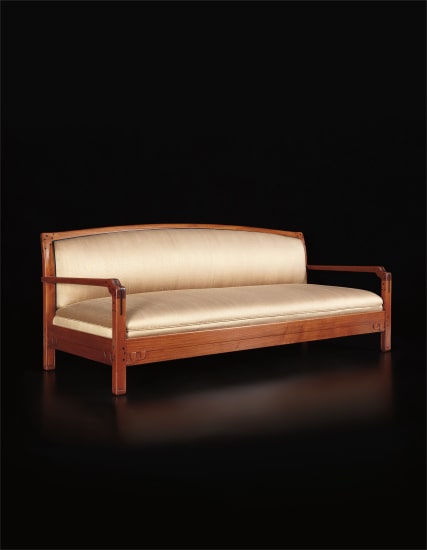


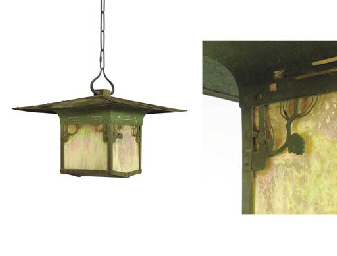
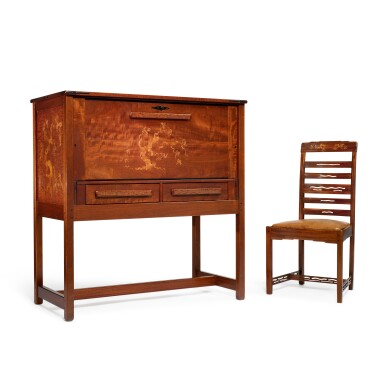

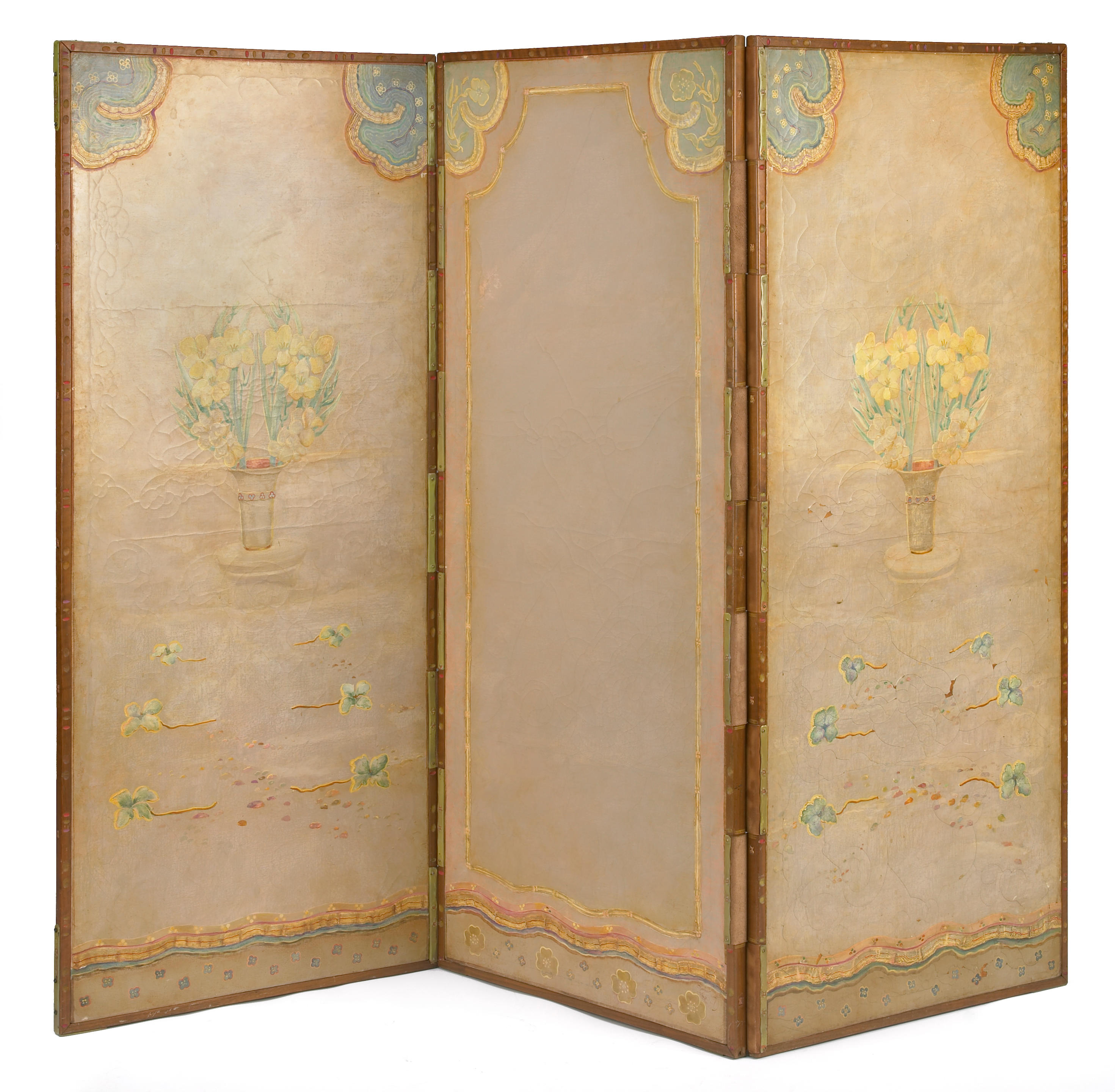



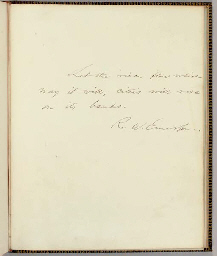

Testen Sie LotSearch und seine Premium-Features 7 Tage - ohne Kosten!
Lassen Sie sich automatisch über neue Objekte in kommenden Auktionen benachrichtigen.
Suchauftrag anlegen